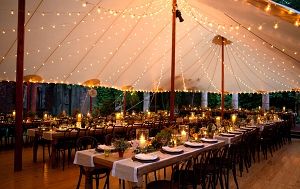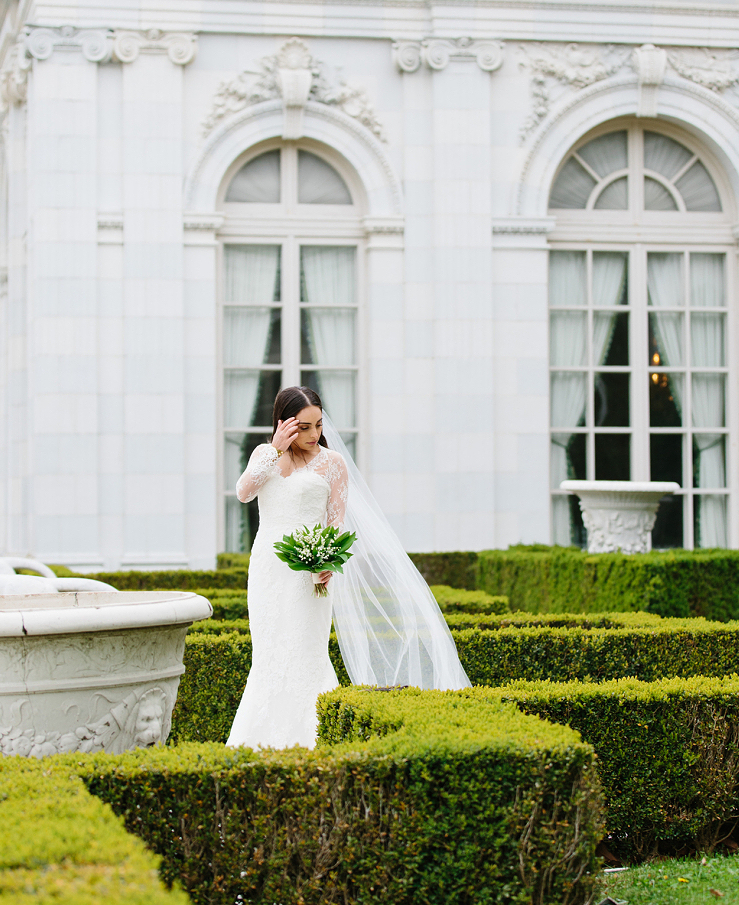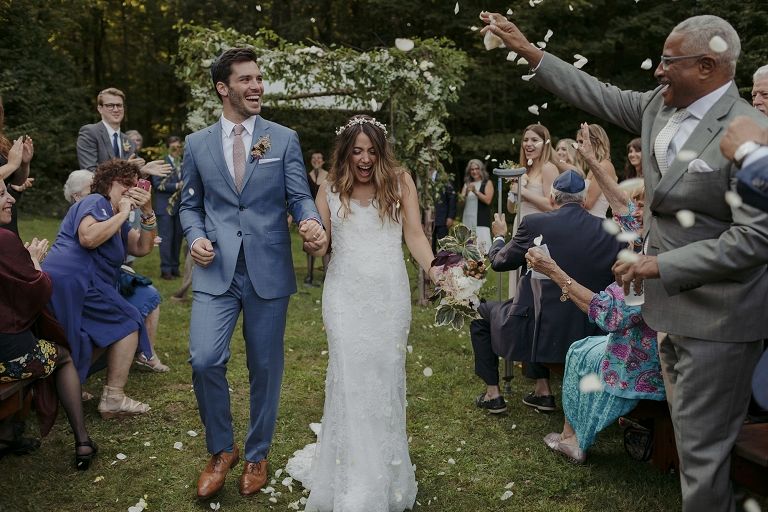
The paradox of planning a wedding is that for many couples their first wedding is also their last. In other words, most people only have one shot to get their once-in-a-lifetime day right, even though first time mistakes are inevitably bound to happen. Perhaps that’s why the majority of recently engaged couples often turn to professionals for help. In the wider world of event design and wedding planning, Jung Lee is considered to be one of the very best at her job. Between running her company Fête, a full-service event firm based out of New York City, and her eponymous brand that specializes in homewares and gift registries, Lee has mastered the art of throwing a party. Hoping to learn some of her secrets of the trade, we asked her for her best advice on the planning process. Below, she talks venues, menus, invitations, and what you should absolutely avoid when planning your big day.
On Picking Your Wedding Venue
Make sure your venue is not too big or too small. Create your guest list and make a best guess as to how many guests you’ll actually have.
Carefully consider everything you get with your venue before you book. Do you like all their china, glassware, and linen? Or, will you need to upgrade?
Find out if there are any exclusive vendors you have to use. If so, get those prices before you commit so you understand the total bill. For example, sometimes a venue only allows a specific lighting company or florist. When this happens, it usually does not benefit the clients, so be sure to get a firm quote beforehand.
Make sure you understand all the costs you will incur before signing a contract. Many times, there tend to be hidden costs (security, service charge, chef station attendants, etc.). Also, be sure to check that there will be enough hours for your vendors to set up.
Make sure you understand the natural lighting for the time of year you are getting married. In other words, if you are getting married outside, check when and where the sun sets.
Sending Your Save-the-Dates and Invitations
Save-the-dates should be sent four to six months before your wedding. If you are having a destination wedding, you can send them earlier.
Invitations should be sent out two months before your wedding. The date by which you should expect your RSVPs back is one month before your wedding. Again, for destination weddings, it’s okay to do a little earlier.
Save-the-dates and wedding invitations do not need to match! Save-the-dates are a fantastic opportunity to have a little fun and inject your personality into your wedding. Your invitation however should be classic and timeless.
You should not include plus-ones on save-the-date cards, as it’s awkward to have someone you don’t know save your wedding date. However, you can include “and guest” for the wedding invitation. People don’t book flights for a destination wedding until they get the invite anyway.
People are increasingly anxious and send save-the-dates and invitations out too soon. However, this can lead to a loss in momentum by the time your wedding actually rolls around.
Wording Your Invitations
The word “honor” or “honour” is reserved for a house of worship. So if you are getting married in a church or temple you would say “. . . the honor of your presence is requested. . . .” and if it is not a place of worship, you should instead write “. . . request the pleasure of your company. . . .”
The year is “two thousand eighteen,” NOT “two thousand and eighteen”
For formal weddings, I think the dress code should read read “Black Tie” or “Formal Attire,” not “Black Tie Optional,” which confuses people.
Creating Your Wedding Day Lead-Up Schedule
Schedule enough time for hair and make-up. This is so essential, as you cannot fall behind.
Leave enough time for when everyone has to be ready for photos, especially if there is any transportation involved.
Write down a schedule ahead of time! There are hundreds of details that go into a wedding. If they are not written down, and if someone is not responsible for executing said guide, there’s a high chance that certain things will not happen. Our day-of schedule is like our wedding day Bible.
Choosing Your Menu
Choose your menu carefully, as you are selecting your first meal as husband and wife, not to mention what all your guest will be eating as well. Think about what you as a couple love—forget the wedding diet at this point! But do keep in mind your guests, what they will likely enjoy, and any potential allergies.
A “choice of” for your main course significantly slows down the flow of the evening, and adds to your budget. Consider serving one pre-selected main course, and having a “silent vegetarian” option as well just in case.
Creating Your Wedding Schedule
The ceremony has so many pieces. You need a ceremony item check list and a very responsible person to ensure that it is taken care of.
Cocktail hour is the best time to greet your guests. Consider taking all your formal photos beforehand so that you can be present throughout the cocktail hour.
The wedding reception should feel organic, with each moment flowing into the next. People make the mistake of putting all the toasts or special dances together to get them over with, however, while these are key moments, they should be spread throughout the evening.












